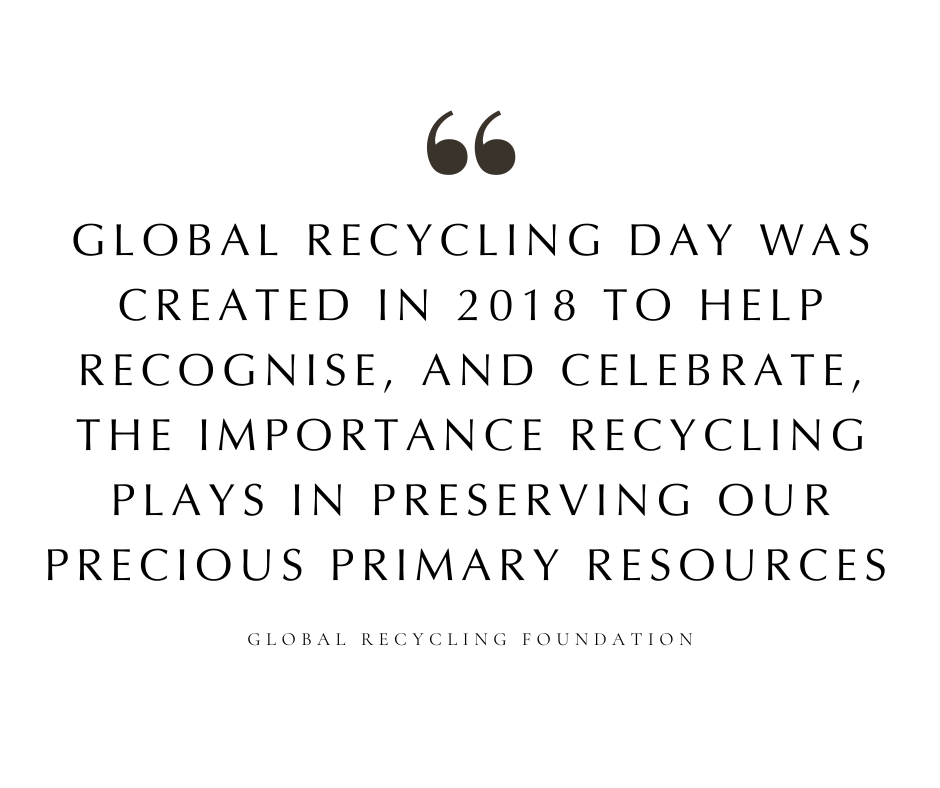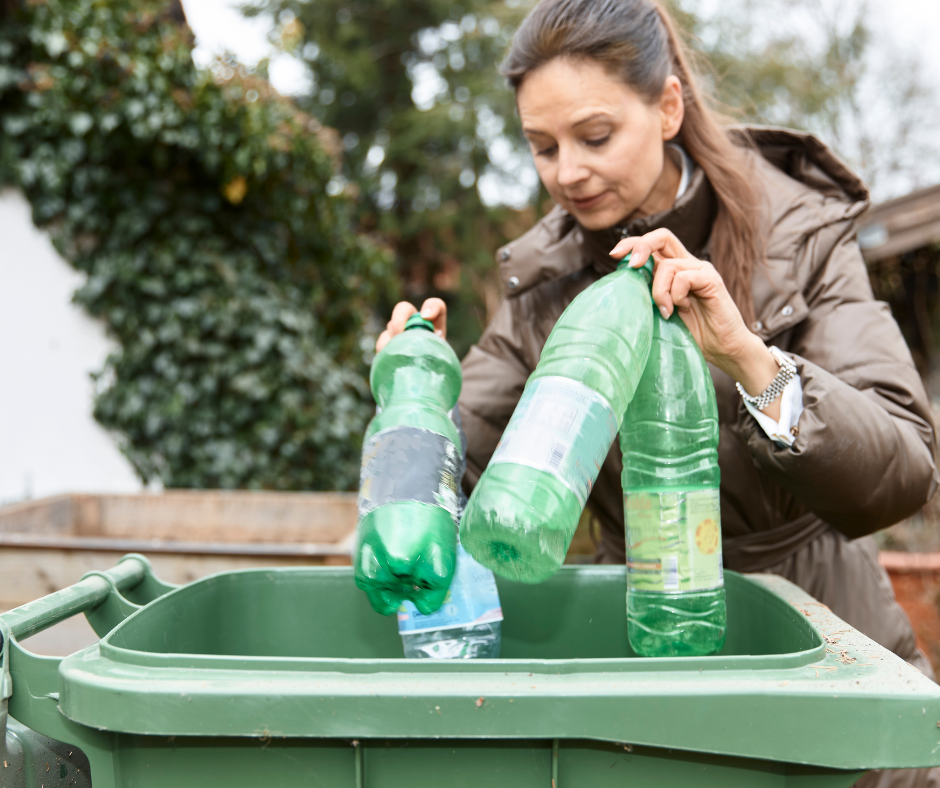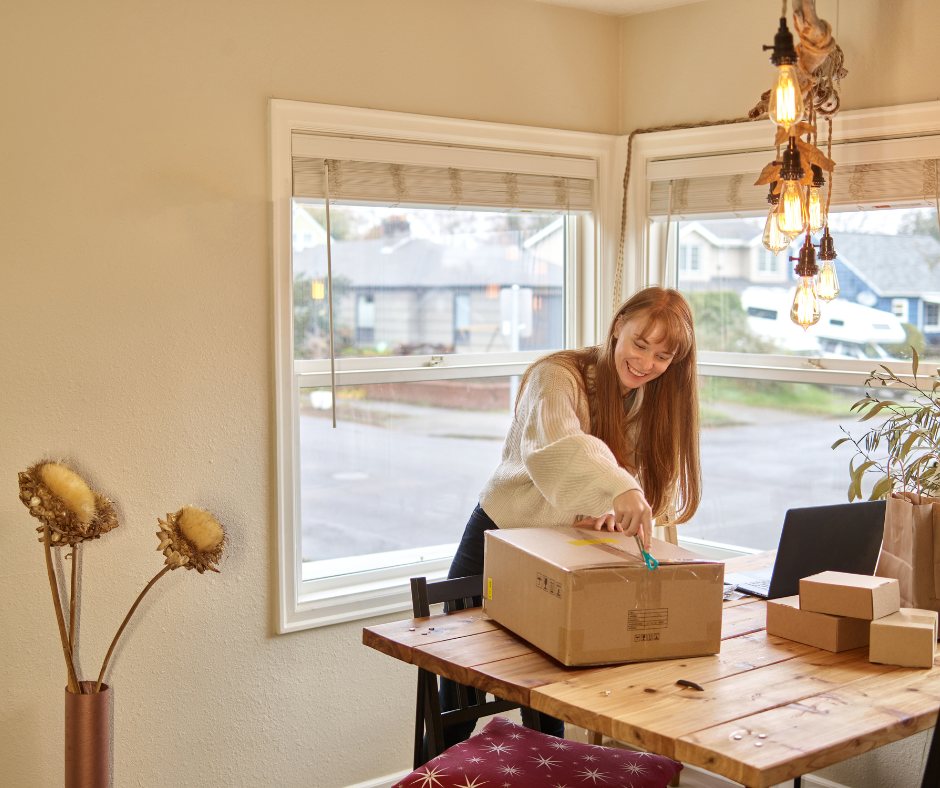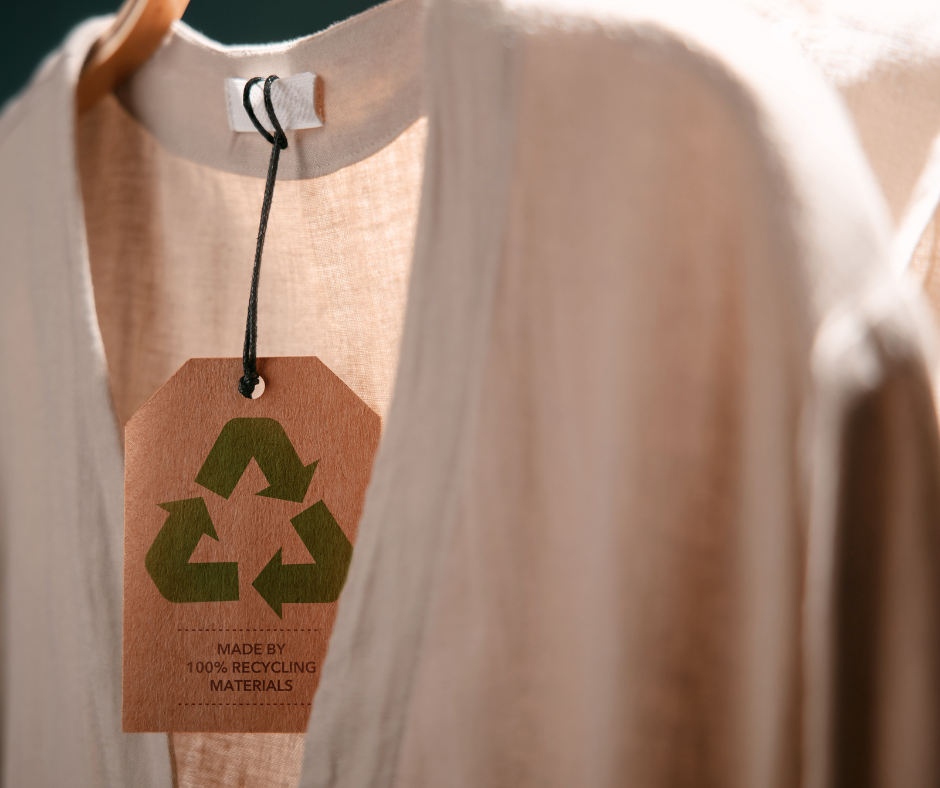
22 Ways to Reduce and Reuse as a Creative in Honor of Global Recycling Day
Summary
In this article, we offer practical advice for creatives to make their businesses more sustainable. It emphasizes the importance of waste management, advocating for practices like conducting waste audits, choosing eco-friendly materials, ensuring supply chain sustainability, adopting minimalist packaging, and embracing digital solutions. Additional strategies include implementing recycling programs, upcycling, eco-friendly shipping, engaging with the community, and continually improving sustainability practices. The article aims to inspire creatives to minimize their environmental impact by integrating these methods into their daily operations.
Reflection Questions
- Which of the 22 strategies for reducing and reusing do you already practice, and how have they impacted your creative work or personal life?
- Identify one area in your creative process or daily routine where you can significantly reduce waste. What specific actions will you take to implement this change?
- How does integrating sustainability into creativity challenge or enhance your approach to projects?
Journal Prompt
Tomorrow (18 March 2024) is Global Recycling Day. Global Recycling Day is a great time to rethink and revamp how women can make their creative businesses more sustainable by recycling, reusing, and reducing the amount of waste they produce. Below are twenty-two ways to limit your impact on the planet by being more thoughtful at work. Your artistic practice is meaningful. Let’s make it gentle on the earth, too!
Why Does Limiting Waste Matter?

The importance of adopting sustainable waste management practices in our own businesses and championing similar practices worldwide cannot be overstated. Before we jump into ways to preserve natural resources, reduce waste, and support the global green agenda by slowing significant and rapid changes in our climate, let’s explore a few statistics. From the World Bank, Global Recycling Foundation, and other organizations, these figures demonstrate the scale of waste generation and the potential impact of recycling and reuse efforts.
The World Bank reported that the world generates 2.01 billion tonnes of municipal solid waste annually, with at least 33% not managed in an environmentally safe manner. Waste generation is expected to increase to 3.40 billion tonnes by 2050, largely due to urbanization and population growth.
Of the approximately 300 million tonnes of plastic waste produced every year, only about 9% is recycled, 12% is incinerated, and the rest ends up in landfills or the environment. The Global E-waste Monitor reported that the world generated 53.6 million metric tonnes of e-waste in 2019, and only 17.4% of this was formally collected and recycled.
Approximately one-third of the food produced in the world for human consumption every year — approximately 1.3 billion tonnes — gets lost or wasted. Significant portions of food waste end up in landfills where they generate methane, a potent greenhouse gas that world leaders warn contribute to continued rising global temperatures.
The Importance of Reuse and Recycling

Recycling materials like aluminum cans, glass, plastics, and paper can save significantly on energy consumption. For instance, recycling aluminum cans saves 95% of the energy required to make the same amount of aluminum from raw materials. The U.S. EPA estimates that recycling and composting of over 87 million tonnes of waste in 2017 resulted in the equivalent of removing more than 45 million cars from the road for a year in terms of greenhouse gas emissions.
On the other hand, reuse of products and materials directly reduces the demand for new raw materials, decreasing the environmental impact associated with extraction, manufacturing, and distribution. Reuse practices extend the useful life of products, reducing the overall volume of waste generated and conserving the energy and resources that would have been used in creating new products. Combined, these efforts could help us reduce impacts on the climate and our planet in the not too distant future.
Fuel your creative fire & be a part of a supportive community that values how you love to live.
subscribe to our newsletter
*please check your Spam folder for the latest DesignDash Magazine issue immediately after subscription

22 Ways to Reduce, Reuse, and Recycle on International Recycling Day
What better way to celebrate Global Recycling Day than to become the recycling heroes of our own communities? Let’s get into it!
#1 Audit Your Waste

A waste audit involves systematically recording and analyzing the waste your business generates to identify patterns and opportunities for reduction. This process includes categorizing waste types (e.g., paper, plastic, organic) and sources (e.g., production, packaging, office) to pinpoint where and why waste is produced. By understanding these details, you can target specific waste streams for reduction, recycling, or composting, setting measurable goals to reduce overall waste output.
#2 Eco-friendly Materials
Choosing eco-friendly materials means prioritizing items made from renewable resources, are biodegradable, or have been recycled. For example, using recycled paper for packaging or soy-based inks for printing reduces reliance on virgin resources and decreases environmental impact. Research suppliers who offer sustainable alternatives to conventional materials and assess the life cycle of the materials you use to ensure they align with sustainability goals.
#3 Supply Chain Sustainability

Supply chain sustainability involves ensuring that your suppliers and their practices meet certain environmental and ethical standards. This includes using recycled materials, minimizing waste, and reducing carbon emissions. By selecting suppliers who prioritize sustainability, you create a ripple effect, encouraging more businesses to adopt eco-friendly practices. Regularly communicate with your suppliers about your sustainability goals and work together to find innovative solutions that benefit both parties and the planet.
#4 Minimalist Packaging

Minimalist packaging design focuses on using the least amount of materials necessary to safely and attractively package products. This approach not only reduces waste but also can save on shipping costs and materials. Consider designs that serve multiple purposes or can be easily reused or recycled by your customers. Encourage feedback from customers on packaging preferences to continually refine your approach.
#5 Digital Over Physical

By offering digital alternatives to physical products, businesses can significantly reduce their material use. This strategy is especially relevant for industries like graphic design, where digital proofs can replace physical samples. Digital products also offer the benefit of instant delivery and reduced carbon footprint from shipping. Assess your product range to identify opportunities where digital versions could replace or complement physical items.
#6 Recycling Programs
Implementing an effective recycling program involves more than just placing bins around your workspace. It requires educating your team about what can be recycled, how to properly sort materials, and the importance of recycling in reducing environmental impact. Consider conducting training sessions and regularly updating your team on recycling best practices. Explore local recycling resources to understand what materials are accepted and how they should be prepared.
#7 Upcycling

Upcycling transforms waste materials into products of higher quality or value. This creative process not only diverts waste from landfills but also can result in unique, marketable products that tell a story of sustainability. Encourage creativity among your team by hosting brainstorming sessions focused on finding new uses for waste materials. Collaborate with artists or other businesses to expand your upcycling possibilities.
#8 Eco-friendly Shipping
Eco-friendly shipping practices include using recycled or recyclable materials for packaging and optimizing package sizes to reduce empty space and materials used. Offering a packaging return program or working with shipping partners committed to carbon-neutral practices can further minimize your environmental impact. Communicate with your customers about the importance of these practices and how they contribute to sustainability.
#9 Community Engagement

Engaging with your community on sustainability can amplify your impact. Hosting workshops, participating in local sustainability initiatives, or creating educational content raises awareness and encourages collective action. Use your platform to share stories of sustainability, showcasing your efforts and inspiring others to make eco-friendly choices.
#10 Continual Improvement
Sustainability is a journey, not a destination. Regularly review your practices, set new goals, and stay informed about advancements in sustainable materials and technologies. Encourage feedback from your team and customers to identify areas for improvement. Celebrate your successes and learn from challenges to continually evolve your sustainability efforts.
#11 Leverage Technology
Technology can be a powerful tool in managing and reducing waste. Use digital tools to track material usage, optimize inventory, and streamline production processes. Software solutions can help identify inefficiencies, predict material needs more accurately, and reduce overproduction and waste.
#12 Customer Education

Educating your customers on the sustainability of your products and how they can contribute to their lifecycle (e.g., recycling or reusing packaging) empowers them to make eco-friendly decisions. Include information on your website, product labels, and social media about how customers can participate in your recycling programs or properly dispose of materials.
#13 Collaborate for Impact

Collaboration can significantly enhance sustainability efforts. By partnering with local businesses, you can achieve economies of scale in purchasing eco-friendly materials, share logistical resources to reduce carbon emissions, and even co-host community clean-up or recycling events. This collaborative approach not only reduces individual costs and environmental impacts but also strengthens the local business community’s commitment to sustainability. Sharing best practices and learning from each other’s experiences accelerates progress and fosters a culture of sustainability within the community.
#14 Rethink Your Business Model

Adapting your business model to incorporate sustainability can lead to innovative practices that benefit the environment. A subscription model, for example, encourages the return and refurbishment of products, thus extending their lifecycle and reducing waste. Similarly, a rental model for seldom-used items keeps products in use for longer and diminishes the need for new products. These models not only promote recycling and reuse but also can open new revenue streams and customer segments for your business.
#15 Offer a Second Life for Products

A take-back program incentivizes customers to return used products by offering discounts on future purchases. Once returned, these products can be refurbished and resold, donated, or recycled. This approach not only ensures that products are properly disposed of or reused but also strengthens customer loyalty by engaging them in a circular economy. It demonstrates your commitment to sustainability and can differentiate your brand in a competitive market.
#16 Utilize Social Media for Awareness

Social media is a powerful tool to spread awareness about sustainability. By sharing tips, success stories, and educational content about recycling, reusing, and reducing waste, you can engage with a broad audience and inspire positive environmental actions. Social media campaigns can highlight the importance of sustainability and show how your business is making a difference. This not only educates the public but also builds a community of like-minded individuals and organizations.
#17 Optimize Resource Use in Operations
Efficient use of resources is crucial for sustainability. Regular evaluations of energy, water, and material use can reveal opportunities for savings and reductions in environmental impact. Implementing energy-efficient lighting and equipment, and water-saving devices, can lead to significant reductions in consumption and costs. Additionally, optimizing production processes to minimize waste not only benefits the environment but also improves operational efficiency.
#18 Reduce Office Waste

Reducing waste in office environments involves several strategies, including going digital to decrease paper use, encouraging the use of reusable items among employees, and setting up dedicated recycling stations for electronics and other materials. Promoting a paperless office, encouraging carpooling or the use of public transport, and providing facilities for employees to store and eat their meals without disposable packaging can further enhance sustainability efforts.
#19 Sustainability Certifications
Obtaining sustainability certifications, such as those from environmental organizations or industry-specific bodies, can validate your business’s green initiatives. These certifications often come with rigorous assessments of your practices, offering a credible endorsement of your sustainability efforts. They can enhance your brand’s reputation, making your products or services more attractive to eco-conscious consumers and business partners.
#20 Innovate with Materials
Innovation in materials is key to reducing environmental impact. Stay abreast of developments in sustainable materials, such as bioplastics, recycled metals, or organic textiles, which can replace more resource-intensive options. Experimenting with these materials can lead to new product lines or improvements in existing ones, reducing your carbon footprint and potentially opening up new markets focused on sustainability.
#21 Offset Your Carbon Footprint

Offsetting the carbon footprint involves investing in projects that reduce greenhouse gas emissions elsewhere, such as renewable energy projects, reforestation, or conservation efforts. This can complement your direct sustainability efforts, making your business carbon-neutral or even carbon-negative. It’s a way to take responsibility for unavoidable emissions and contribute positively to the global fight against climate change.
#22 Educational Workshops and Events
Hosting workshops and events that focus on sustainable living, crafts, and repair techniques can establish your business as a community leader in sustainability. These events engage your community, provide valuable skills, and promote sustainable practices. They can also foster a sense of community around your brand and increase customer loyalty.
#23 Feedback Loop

Establishing a feedback loop with customers and employees about your sustainability practices invites suggestions for improvement and new ideas. This can be achieved through surveys, suggestion boxes, or interactive social media platforms. Engaging stakeholders in this way not only helps identify areas for enhancement but also makes them feel involved in your sustainability journey, building a stronger connection with your brand.
How Will You Limit Your Consumption of Goods and Production of Waste on Global Recycling Day?
Let us know in the comments below!
Design Dash
Join us in designing a life you love.
Women, In Their Own Words: Paulina Hospod
Enjoy insights from Paulina Hospod of AhA!nteriors in our “Women, In Their Own Words” series on leadership, creativity, and craft.
7 Alvar Aalto Furniture Pieces That Exemplify Scandinavian Design
We hope you enjoy this designer-focused look at seven Alvar Aalto furniture pieces that capture the core of Scandinavian design.
What is Soft Minimalism and How Can I Capture the Interior Design Style?
Learn all you need to know about soft minimalism, the warm and natural take on minimalist design that actually makes sense for real life.
What Can I Expect From an Interior Design Intern? Do I Have to Pay Them?
What interior design interns can actually do, why paying them matters, and how to build a program that reflects your studio’s values.
How Long Does It Take Designers To Get Their First Client After Going Solo?
New firms land their first clients on wildly different timelines. Here’s what matters: relationships, process, and using the wait wisely.
Do Personality Tests Actually Help You Hire Design Firm Employees?
Can personality tests improve design firm hiring or just complicate it? Learn how to use them wisely with tips from experienced firm owners.








